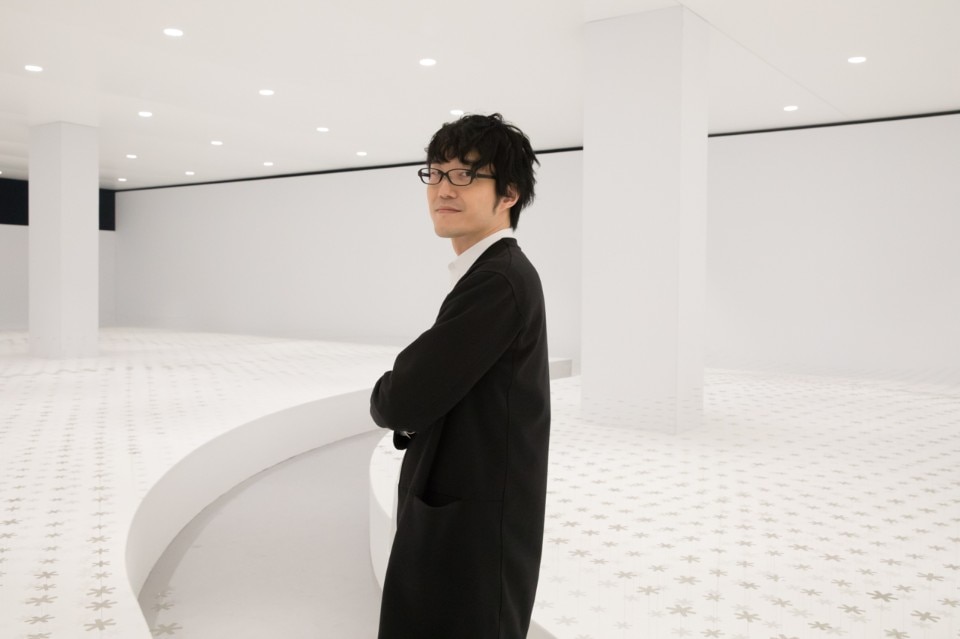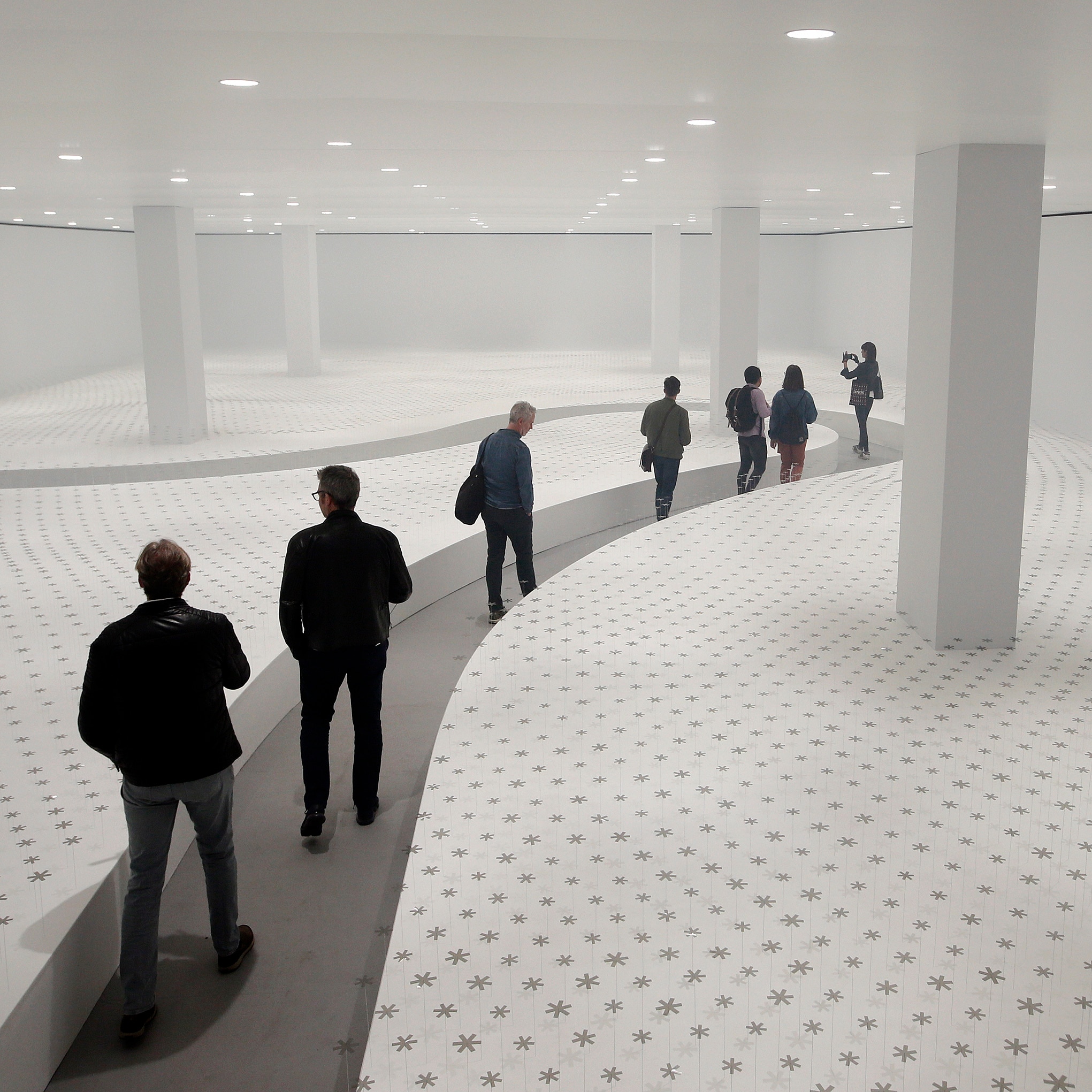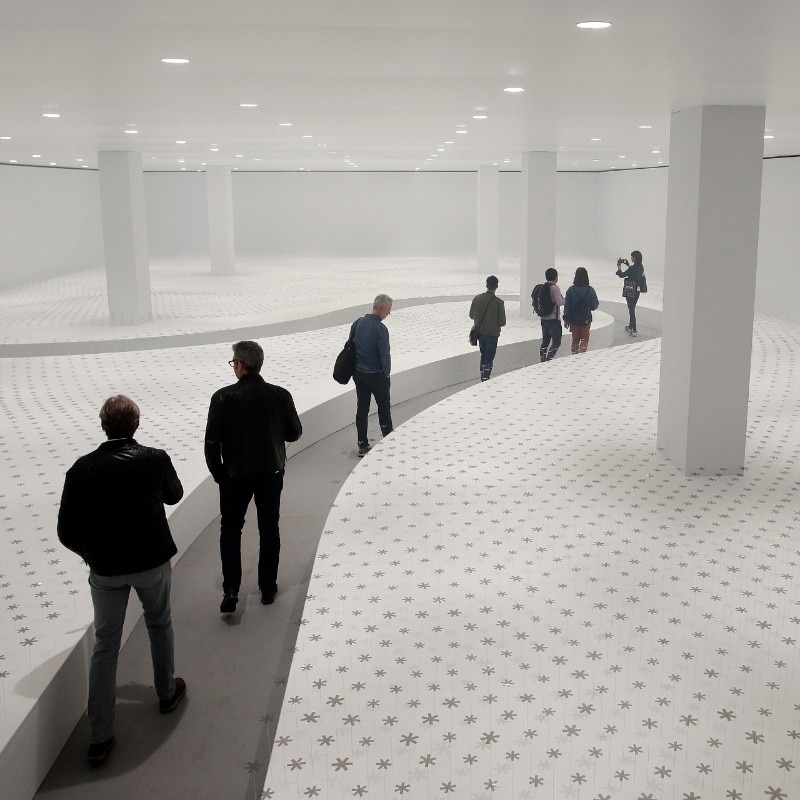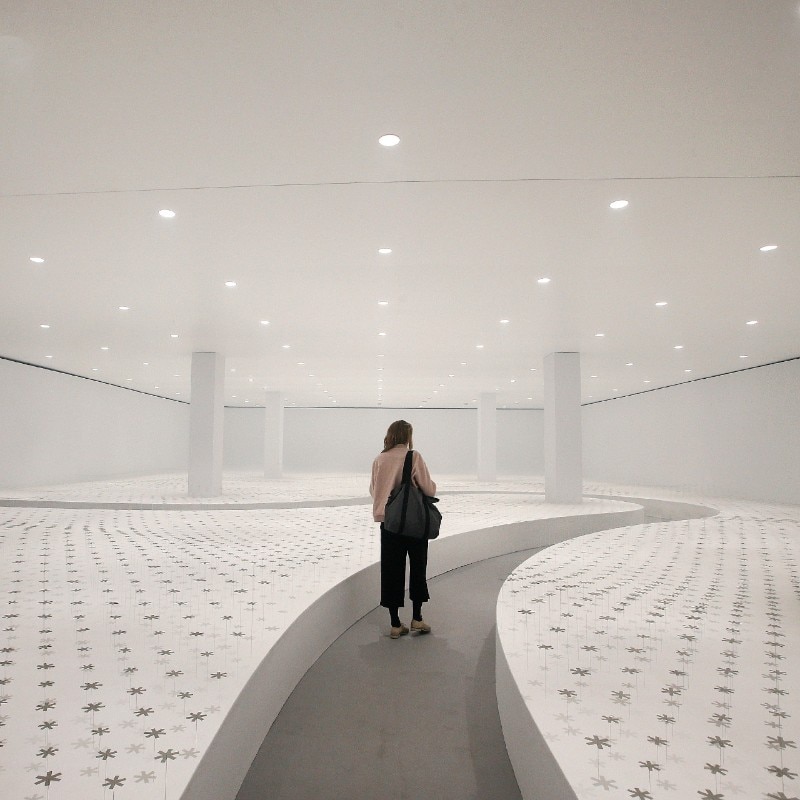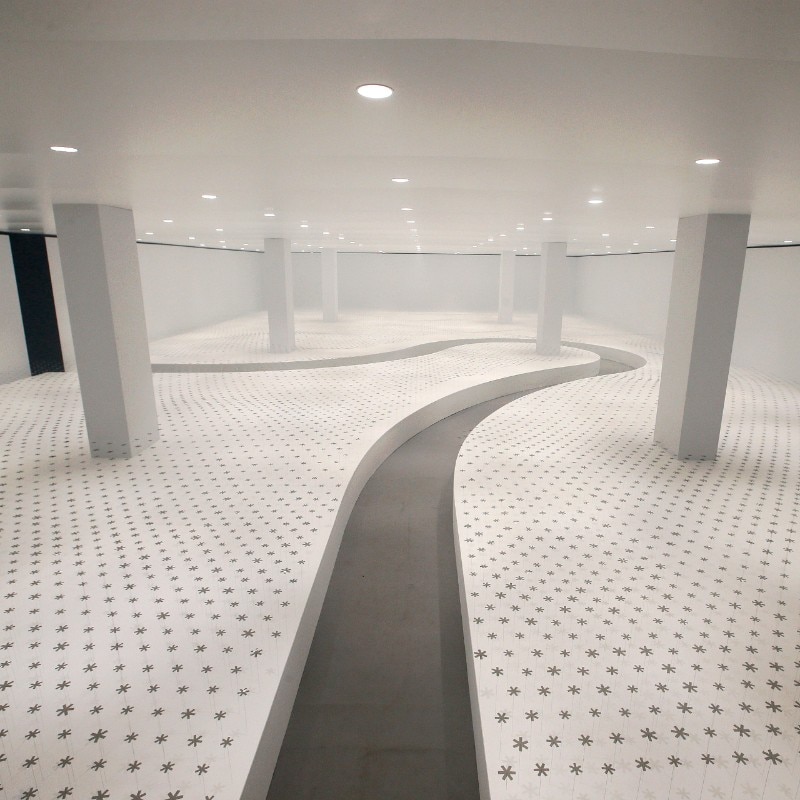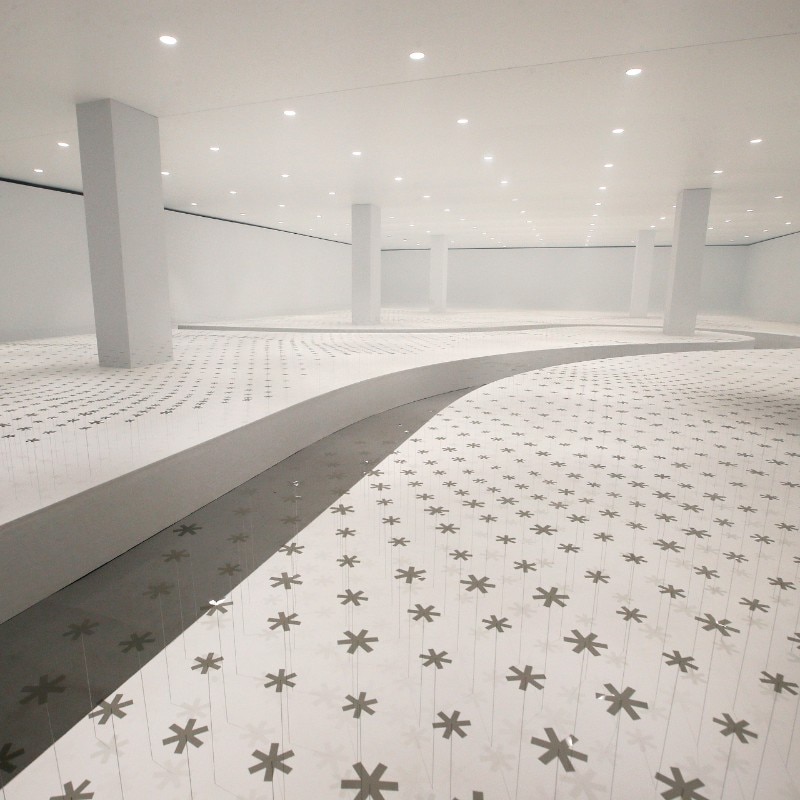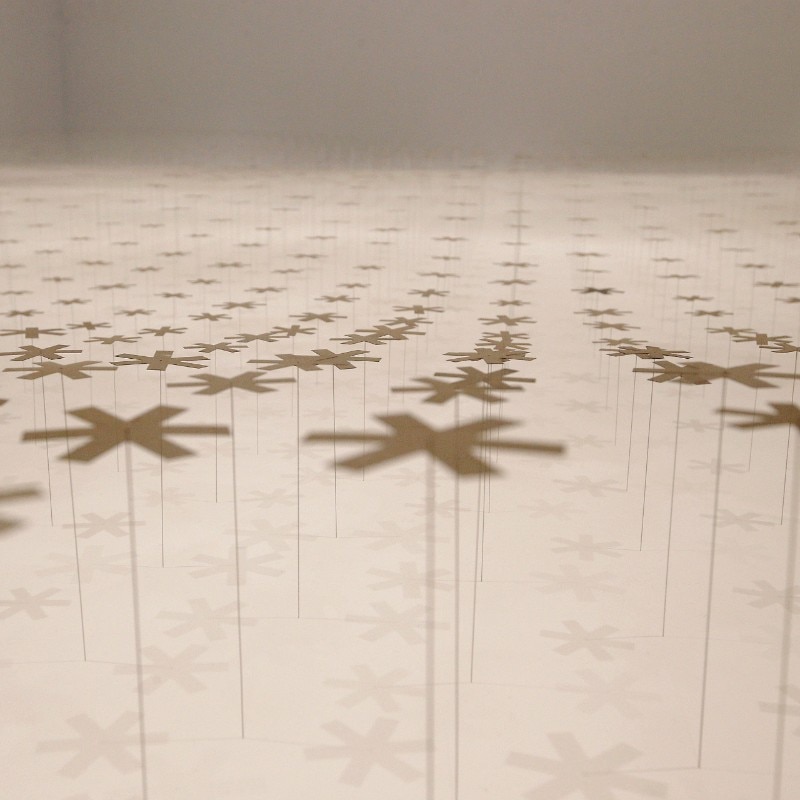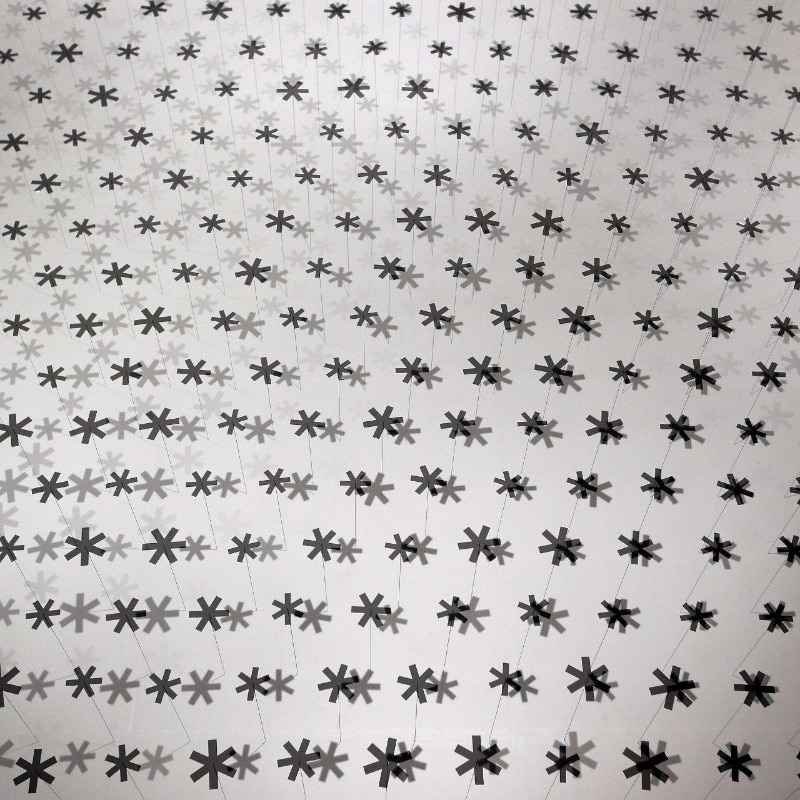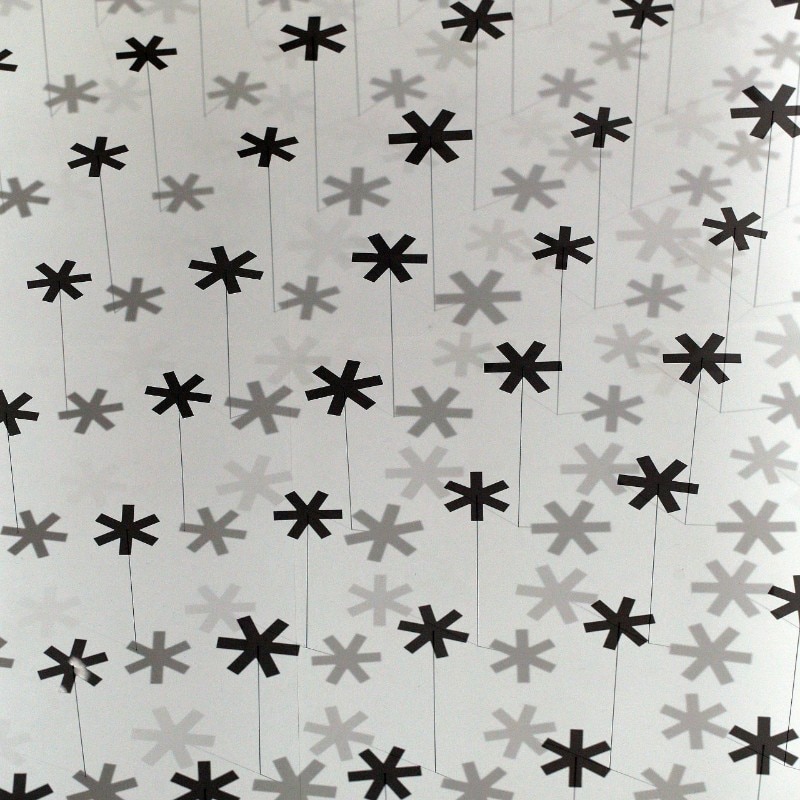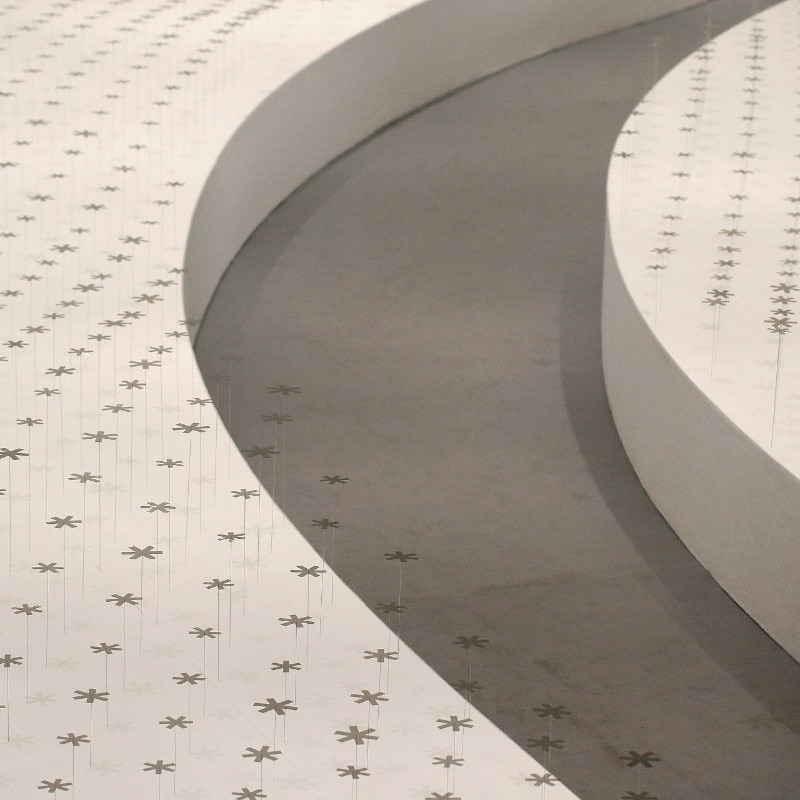Oki Sato – founder of Japanese brand Nendo – landed at the Milan Design Week with an immersive installation for Daikin within the spaces of Tenoha, a corner of Japan in via Vigevano 18. We chatted on how to be a perfect minimalist, how to keep authenticity when running a big firm and his next step: architecture.
How did Breeze of Light come to life?
We started a conversation with Daikin on how to express “air”, which is the core philosophy of the brand, and which is something that you cannot really see or feel. So I came up with an idea of a room where you can feel the wind without using any wind but just using light and shadow.
When I started playing with polarizing film I noticed that if I have polarized-film flowers and a spotlight with another polarizing film in front and moved it, you don’t have to change the power of light to change the amount of shadow cast on the floor. This is interesting because usually when you want more shadow you need more light, and viceversa.
In this case the shadow is not really affected by the light, so by using this technique we ended up with 17.000 flowers all in a specific position and direction: they had to be horizontal to create this landscape, and every single flower has a different height. The idea started July last year but we actually did tons of tests in Tokyo and construction took two full months! We arrived here in Milan in February and there were more than 20 designers working here. It feels strange that we have to dismantle it in less than 7 days, but I think it’s the magic of the Salone.
The execution is almost maniac, if you get closer to the flowers: they are glued to the metal stem but it’s almost invisible.
Yes, we glued every single metal stick by hand and we produced the panels in Japan with laser-cut holes of 0.5 mm or else they would bend. Then everything is made with paper so that the overlapping is seamless: if we had used paint it would have clogged the wholes, so in the end we used paper. It’s like a huge architectural model. For the taller flowers we used 0.7 mm metal sticks, so they wouldn’t bend. We did so many tests, it was crazy. And is a pity that not so many people noticed the shadows moving.
You have a good perception of it when you see it from above. This multitude of elements strikes the eye. And is something common in your work, this repetition of elements. Where does it come from?
I like to start from the small scale, from a very small idea that I try to expand into objects and into space. Sometimes just blowing up the scale does not really work and I want to maintain the scale of the flower and the shadow and the spotlight. In the end we need to repeat these elements to create space. I think is just a method that we use because we start from a small idea.
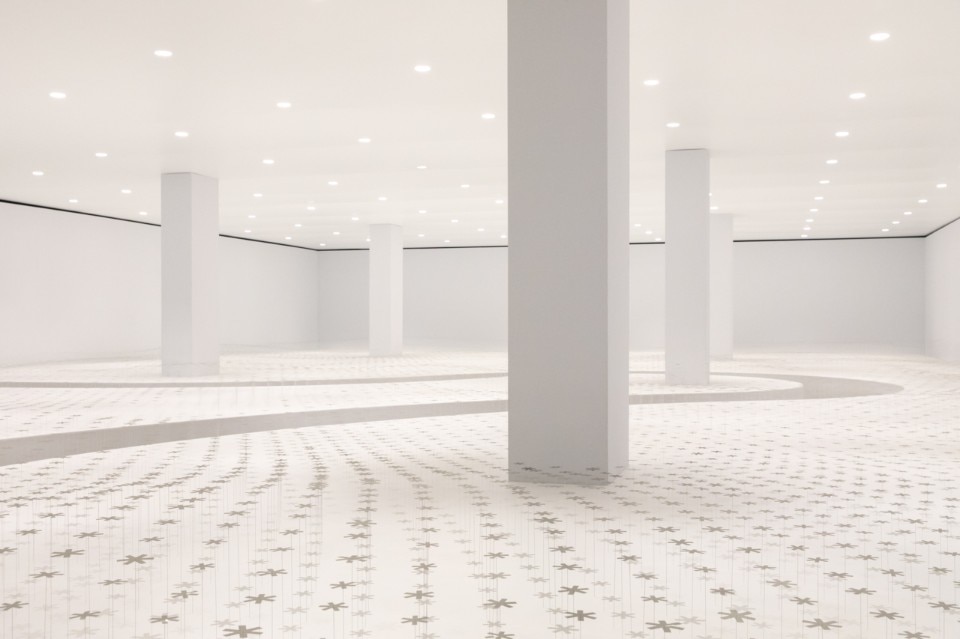
Were you born a minimalist or is it a constant, hard exercise you have to do all the time?
I do this very naturally, maybe because I respect more the concept, the story behind the object rather than the object itself. Instead of being fascinated by colours or forms, it’s this story behind that I’m looking for. When I want to tell a story, the object that is in front should not stand out too much, therefore I don’t want much decoration or something that distracts from the story behind it.
Maybe it’s kind of similar to Japanese cuisine or food. Take for example tofu, it’s just a white block, something very minimal, but the process behind it is very time consuming, there is a lot of technique within that process. Sushi as well. Sushi is just rice with raw fish on top but the technique of cutting it and treating fish takes loads of time. I think is similar to what I’m trying to do with design. Does it make sense?
Take for example tofu, it’s just a white block, something very minimal, but the process behind it is very time consuming, there is a lot of technique within that process
It does, but when you create an object you’re still in the act of producing something, so there is always the risk of overdoing. How do you approach this?
This is a good question. It’s something I think about almost every day: doing too less is too less, doing too much is too much. Finding a good balance is one of the most important things a designer should do. It’s very difficult.
Is Nendo ever going to go baroque?
Maybe one day, when I grow old (laughing).
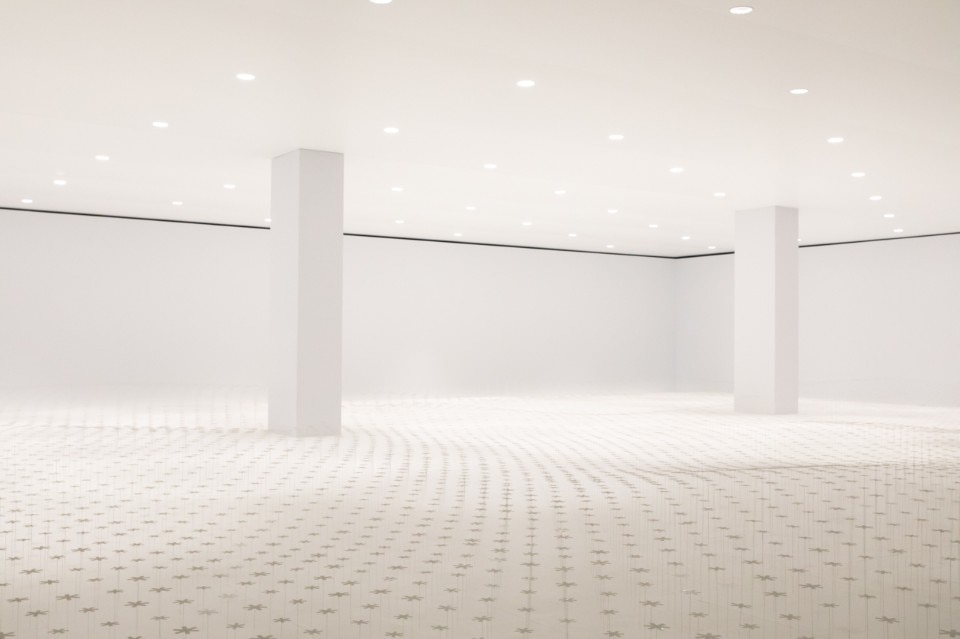
In such a big studio as yours how do you keep the purity of the concepts, the authenticity of ideas?
There isn’t any magic to that, I try to never let go the concept, whatever happens, because – you know – there is the client needs, and the budget, and a lot of things that get in the way between you and the concept. I always feel that I have to hold to that. It’s about working on every single detail.
Even if I work with about 40 designers in the studio, I check every single prototype, I have meetings with almost each of them every day, it takes me 6 or 7 hours a day. When I’m in Tokyo I do meetings, meetings, meetings with my designers and it’s not just about the grand concept but about working and refining every single detail. But it is a risk sometimes.
When you work too much on detailing you lose the entire story sometimes. It’s like a zooming lens: I come back and forth every time. Having so many projects all at once allows you to forget about them for a few hours or a few days, so you always have a fresh mind when you come back. Plus, when something is not working in one project you can put it into a totally different one: it’s like a puzzle, a constellation of stars that you just connect, ending up with nice stories.
I don’t think that special moments create special ideas: it’s boring moments that do
What is design all about? What should express?
It’s about changing the way of seeing things, I guess. A new perspective that I try to deliver to my clients or the people who interact with my pieces. After you see this installation, for example, you will think differently about light and shadow. It’s important for a designer to deliver those moments. I feel that the difference between art and design is that design has to solve some kind of problem, or refine something in everyday life, whether if it’s something very very small.
But your work sits in between design and art.
Well yes, it’s very hard to say because this installation isn’t really solving any problem... actually it’s generating more problems! (laughing). In a way it broadens people’s mind, so that’s very important. Quite recently we’re not only hiring designers but there are scientists and engineers working in our studio and these guys really help us out to create what we do. The studio is getting really borderless.
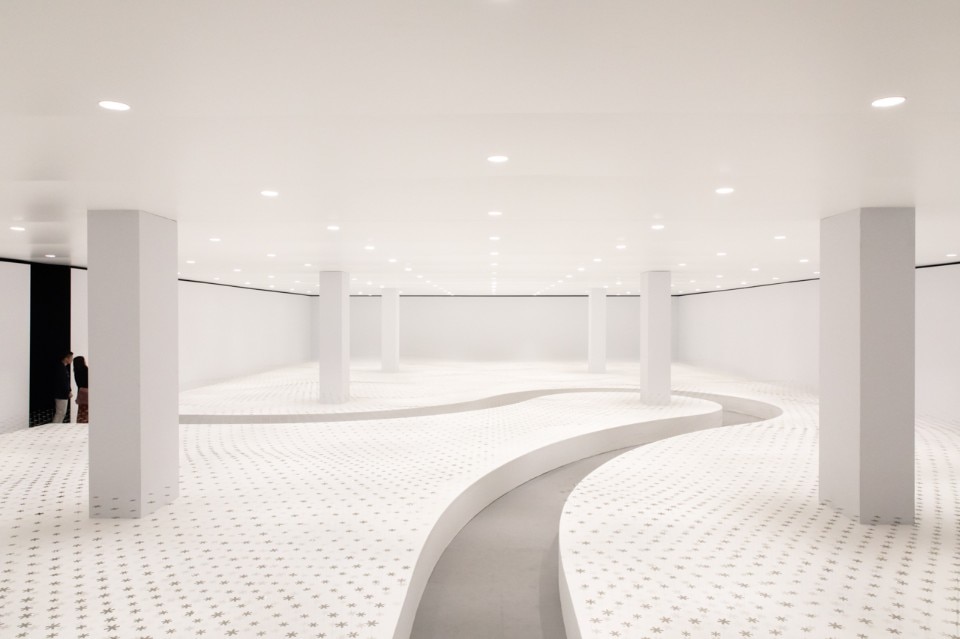
Where is your studio going to be in the future?
I have no idea at the moment. It’s our first time working on a software to control this wind and I didn’t want to do something too high tech or media art but with the help of this technology we are able to control the overall effect. But for me is very important that a project feels natural, in a way. It has to have a little bit of playfulness and friendliness and it should not look too digital.
We are trying to expand to architecture now, in the next few years. Trying to find a link between furniture, interior and architecture, and trying to find new ways of producing architecture.
What is your relationship with architecture?
It’s a totally new thing for the studio. One project we are working in Japan is a weekend house made of prefab, ring-shaped, very cheap concrete blocks. It’s almost like a product design. We are working with engineers to put them together and create spaces for living, finding new ways of building architecture, it’s exciting. I studied as an architect in Japan, then I switched to design when I went to my first Salone del Mobile in 2002, and now I am slowly trying to approach architecture from a different point of view. I’m not sure if it’s going to work or not.
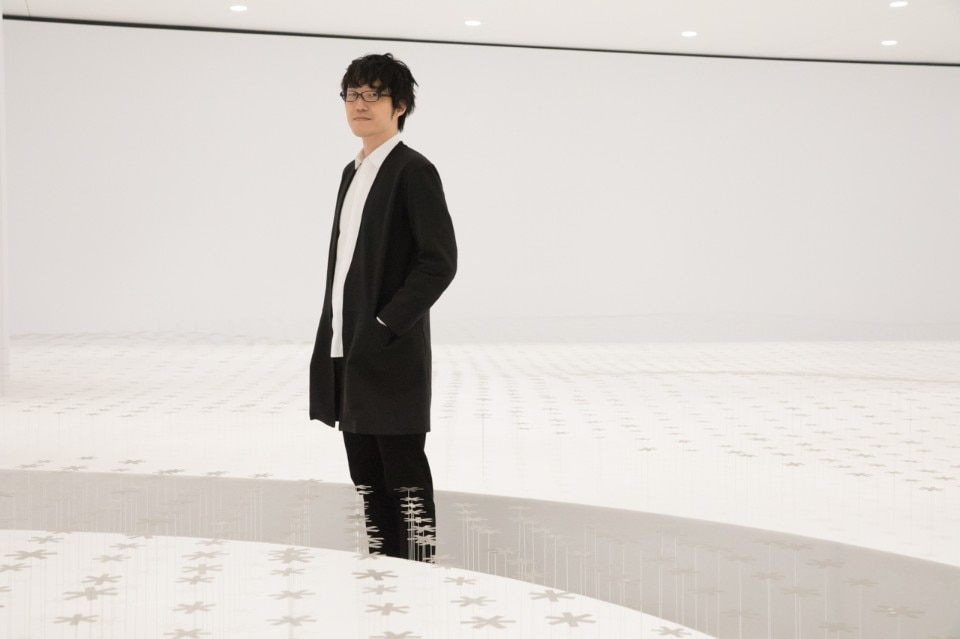
What does the Nendo house need to have?
Emotions. I think of it as a small piece of furniture, in a way. I’m not saying that I’m going to design every single handle, but just trying to find things from the catalogue is not really interesting to me. I’m already designing plugs and switches that are functional design pieces for the house.
You have designed almost everything, your production is one of the vastest in the design industry. Where does inspiration come from?
It comes only from everyday life. I don’t think that special moments necessarily create special ideas. I think that boring moments do, the everyday routine – like waking up, brushing your teeth – it really resets my mind, I can stay blank and be centered. When you work on so many projects you might lose yourself. By doing the same everyday things I am able to become zero again and have a fresh mind always. It’s not the big things that create big design but it’s the small things that are really important to me.
- Project:
- Breeze of Light
- Brand:
- Daikin
- Designer:
- Oki Sato/ Nendo
- Location:
- Tenoha, via Vigevano 18, Milan
- Venue:
- Milano Design Week 2019



